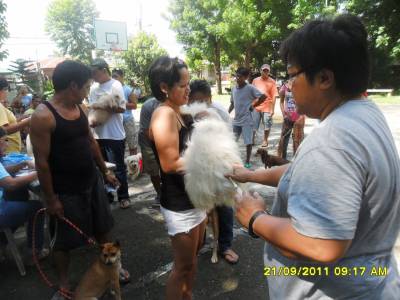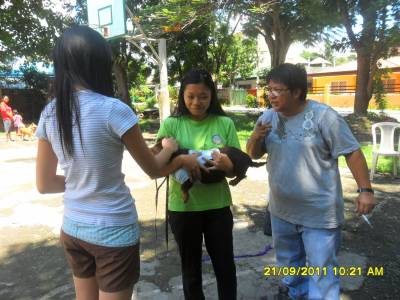9.03 PM Dog Vaccination – Round 3! Let’s Get To Rumble………. | |
The
third round of dog vaccination was done simultaneously at two venues; Pampanga
Executive Homes and Belen Homes Subdivision last September 21, 2011 from 8:00
am. – 12 :00 noon. Different kinds of breeds were seen during that day, and of course it would not be complete without the cover girl who really stand out during the pictorial. There was a miniature black doberman, a little bit smaller than a cat and there was also a dog with its handler that you could hardly distinguish which is which. The vaccination of dogs in one way to prevent the spread of the virus rabies. Rabies is a disease (caused by the rabies virus) primarily of animals, including both wild and domestic animals and human beings. Although people usually associate rabies with dogs, among domesticated animals in the U.S., rabies today is more likely to be found in cats. | |
|
| |
Tuesday, 2025.12.02, 11.58 PM
Welcome Guest
Welcome Guest
Main » 2011 September 21 » Dog Vaccination – Round 3! Let’s Get To Rumble……….












